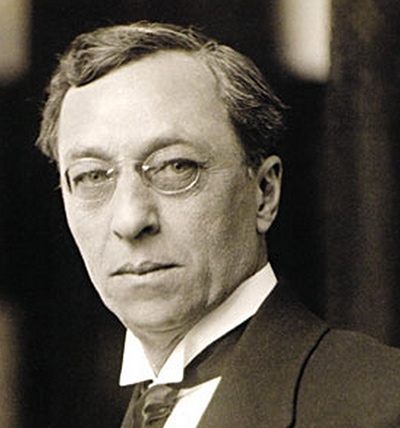Artist quotes help us to build a picture about their personality and opinions on a variety of topics, discover some significant quotes from Wassily Kandinsky below, alongside various views from others about his artistic legacy.
Famous Quotes by Wassily Kandinsky
The nightmare of materialism, which has turned the life of the universe into an evil, useless game, is not yet past; it holds the awakening soul still in its grip.
A painter, who finds no satisfaction in mere representation, however artistic, in his longing to express his inner life, cannot but envy the ease with which music, the most non-material of the arts today, achieves this end. He naturally seeks to apply the methods of music to his own art.
The spirit, like the body, can be strengthened and developed by frequent exercise. Just as the body, if neglected, grows weaker and finally impotent, so the spirit perishes if untended.
With few exceptions, music has been for some centuries the art which has devoted itself not to the reproduction of natural phenomena, but rather to the expression of the artist's soul, in musical sound.
Lend your ears to music, open your eyes to painting, and... stop thinking! Just ask yourself whether the work has enabled you to 'walk about' into a hitherto unknown world. If the answer is yes, what more do you want?
Colour is the keyboard, the eyes are the harmonies, the soul is the piano with many strings. The artist is the hand that plays, touching one key or another, to cause vibrations in the soul.
Must we not then renounce the object altogether, throw it to the winds and instead lay bare the purely abstract?
The deeper the blue becomes, the more strongly it calls man towards the infinite, awakening in him a desire for the pure and, finally, for the supernatural... The brighter it becomes, the more it loses its sound, until it turns into silent stillness and becomes white.
The sound of colors is so definite that it would be hard to find anyone who would express bright yellow with base notes, or dark lake with the treble.
Everything starts from a dot.
Every work of art is the child of its age and, in many cases, the mother of our emotions. It follows that each period of culture produces an art of its own which can never be repeated.
The artist must train not only his eye but also his soul.
Our epoch is a time of tragic collision between matter and spirit and of the downfall of the purely material world view.
There is no must in art because art is free.
To create a work of art is to create the world.
Quotes by Art Historians and other Artists about Wassily Kandinsky
One of the pioneers of abstract modern art, Wassily Kandinsky exploited the evocative interrelation between color and form to create an aesthetic experience that engaged the sight, sound, and emotions of the public. He believed that total abstraction offered the possibility for profound, transcendental expression and that copying from nature only interfered with this process. Highly inspired to create art that communicated a universal sense of spirituality, he innovated a pictorial language that only loosely related to the outside world, but expressed volumes about the artist's inner experience.
TheArtStory.org
The idea of music appears everywhere in Kandinsky's paintings. He believed shades resonated with each other to produce visual 'chords' and had an influence on the soul.
The Guardian
The neurological phenomenon Kandinsky experienced is called synesthesia (or "joined perception," from the Greek word syn meaning "join" and aisthesis meaning "perception"). It's a rare but real condition in which one sense, like hearing, concurrently triggers another sense, such as sight. People with synesthesia might smell something when they hear a sound, or see a shape when they eat a certain food. Kandinsky literally saw colors when he heard music, and heard music when he painted.
Denver Art Museum
For him, abstraction provided a vehicle for direct expression, circumventing language. He believed that color and form possessed their own affective power, acting on the viewer independently of images and objects.
MoMA
In the first decades of the 20th century as painting was becoming increasingly abstract, Vasily Kandinsky (1866–1944) and his theory of a non-objective approach to art altered the course of painting. Spanning five decades, Kandinsky’s career as a painter, a teacher, a writer, a poet, and an exhibition organizer brought him into contact with diverse artistic and intellectual currents. This exhibition explores the relationships between the work of Kandinsky and that of his contemporaries through more than 90 paintings, works on paper, and sculptures from the Solomon R. Guggenheim Museum’s vast early 20th-century holdings.
Guggenheim




